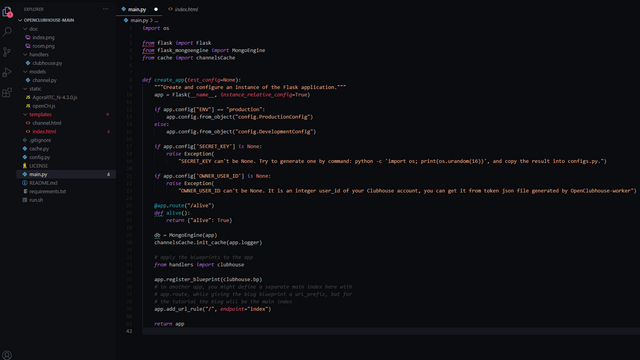- Fira Code Visual Studio Code
- Visual Studio Code Fira Code Ligatures
- Code Fonts With Ligatures
- Visual Studio Ligature
- Add Fira Code Font To Visual Studio Code
Visual Studio Code is a code editor redefined and optimized for building and debugging modern web and cloud applications. Visual Studio Code is free and available on your favorite platform - Linux, macOS, and Windows. Local macro back tick autocompletion. When you write a `, Visual Studio Code automatically fills in a ' after your cursor; Makes it easy to spot incorrect nesting of compound quotes; Support for programming ligatures for all valid Stata syntax for fonts that support them, like the Fira Code font. Highlights SQL queries used in the odbc command.

Fira Code Visual Studio Code
I have recently got into caligraphy and thought it would be neat to see cursive in my code editor as well. A quick google and I found a monospaced cursive font with ligatures! (Ligatures are basically symbols that replace pieces of code like ! to single looking character.) It’s really nice and makes some things very easy to read on top of making the coding experience a little more fun.
Ost to pst converter free full version. To get started…
- You’ll first need to download Fira Code fonts and install them.
- Install and apply Dark++ Italic theme.
- Open your VS Code
settings.jsonfile and add the following lines:
You could be done at this point if you are fine with the Dark++ Italic theme colors. Or you could add these additional settings to your settings.json to override any themes’ font configuration:
Note: I added a some additional italics that Dark++ Italic didn’t have, like comment.
Conclusion
While taking notes can sometimes seem boring, it can be fun with a nice pen, some ink, and the right notepad. Adding Dark++ Italic and Fira Code does that to my IDE. There are also other monospaced cursive fonts out there like Operator Mono Lig, for example. Try some out and see what works for you. Have fun.
Stata syntax highlighting in Visual Studio Code, built from the ground up.
Also available for Atom.
Code snippet from Gtools, a faster implementation of Stata's collapse and egen using C plugins. Shown with the Material theme.
Features
This package highlights:
- System commands, functions, and function arguments
- Macros, both global and local
- Accurately colors nested macros and escaped macros in strings when you want the inner macro to evaluate at runtime
- Colors macro extended functions inside
`: .. 'as well as afterlocal lname:
- Comments, more accurately than Stata's Do-file Editor.
- Regular expressions
- Colors both the limited syntax provided through the
regexr()andregexm()functions, as well as the vastly expanded regex syntax provided in Stata 14 and 15 through theustrregexm(),ustrregexrf(), andustrregexra()functions.
- Colors both the limited syntax provided through the
- Dynamic Markdown and LaTeX documents. Instructions below.
Other nice features:
- Works with unicode identifiers. Use unicode anywhere it's legal Stata syntax.
- Alerts you if your variable name is illegal, i.e. if your variable name is more than 32 chars, starts with a number, or is a reserved name.
- Alerts you if you have any text other than } on a line ending a foreach/forvalues/if/else command
- Local macro back tick autocompletion. When you write a `, Visual Studio Code automatically fills in a ' after your cursor
- Makes it easy to spot incorrect nesting of compound quotes
- Support for programming ligatures for all valid Stata syntax for fonts that support them, like the Fira Code font.
- Highlights SQL queries used in the odbc command. (The language-sql base package must be active.)
Note
Some themes may not color all parts of the syntax.
Installation
Launch VS Code Quick Open (Ctrl+P), paste the following command, and press enter.
Running Code
This package doesn't have the capabilities to run your code in Stata. If you're using Linux, you can use my scripts with the Autokey automation utility to quickly run selections of your files in a graphical session of Stata.
You might also be interested in trying to port Atom's stata-exec package.
Dynamic Documents
Stata 15 brought new features for working with dynamic documents. The dyndoc command lets you write in Markdown and converts your file and code to HTML for viewing in a web browser.
Visual Studio Code Fira Code Ligatures
It also added the dyntext command, which fills in Stata output for any text file, without touching the text itself. This lets you then use third-party document generators like Pandoc and LaTeX to generate documents.
This package now provides syntax highlighting for Stata code written inside Stata's dynamic tags for Markdown and LaTeX documents.
By default, this package's Markdown and LaTeX syntax highlighting will be applied for files ending in .domd and .dotex respectively. The Markdown All in One and LaTeX Workshop packages must be installed for the highlighting to work.
If you name your file with a different extension, you can manually set the highlighting by clicking on the 'Plain Text' button on the bottom right of the screen (or by pressing CTRL+SHIFT+L) and then selecting Stata Dyndoc (Markdown) or Stata Dyndoc (LaTeX) from the drop-down menu.
Examples
Code Fonts With Ligatures
An example of the PDF output of using dyntext and Pandoc is in the examples folder: dyntext.pdf.
That file was created by running
from inside Stata 15, and then with
Visual Studio Ligature
on the command line using Pandoc.
Add Fira Code Font To Visual Studio Code
The file dyntext.dotex is a proof-of-concept and should compile with LaTeX but the output is not shown here.

